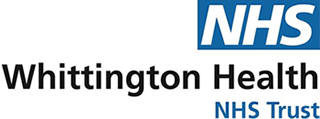Whittington Health Staff Deliver Performance Improvements Despite Record Demand

23 Apr 2024
Latest statistics show Whittington Health is out performing the national average on several important measures
Full story
New figures pulled together by our Information Team show that Whittington Health is going further and faster than the national average in providing care for patients quickly and safely. On 11 April 2024 NHS England released figures across several key performance metrics including access to timely cancer diagnosis, performance against Emergency Department standards and reducing long waits for planned care.
This national data has now been compared directly against the figures for Whittington Health NHS Trust. They show that in several key areas, local people can be confident that their NHS is doing what is needed to ensure that everyone who needs care receives it as quickly and safely as possible.
Monthly statistics show the Emergency Department (ED) in hospitals across England reported that March was the busiest month ever with 2.35 million attendances, 8.6% higher than the number of attendances in March 2023 (2.17 million). At Whittington Hospital nearly 10,000 people sought urgent and emergency care in March (9,562) up by more than the national overall average at 9% compared to March 2023. Of those patients, the decision was taken that an admission to hospital was required in 977 cases. This is up over 7.5% on last year, reflecting that we are seeing more unwell patients present at ED who require a hospital stay and this exceeds the 6.6% increase nationally.
It was the busiest ever year for ED services in England, with figures showing 26.2 million patients coming through the hospital front door (April – March), up 5.7% on 24.8 million pre-pandemic (year to March 2019).
Despite this significant pressure, and thanks to local staff delivering the improvements set out in the NHS urgent and emergency care recovery plan, there have been improvements in performance with 73% of people coming t the emergency department spending less than four hours in Whittington Hospital’s ED department last month. Nearly 10% (8.8%) more patients this March were seen, treated and admitted or discharged within 4 hours than in the same month in 2023.
This progress comes on the back of robust winter planning. This has seen the Trust expand its virtual ward / remote monitoring service to enable more people to be cared for safely in the familiarity of their own home. . We opened 43 additional beds as part of the winter plan to create capacity for the increase in admissions over the winter period. Faster admission to hospital has also been possible thanks to the hard work and support of our local authority partners. They have worked to ensure that more people who require social care are able to leave hospital when they are fit enough to do so, freeing up beds for those arriving at the front door of the hospital.
Thanks to the hard work of Whittington Health staff, almost four fifths (77.7%) of people received a definitive cancer diagnosis or all clear within four weeks – this compares to 78.1% nationally with almost 200,000 (199,659) patients across England getting the answer they need within 28 days in February.
Nationally, the waiting list in February was 7.54 million, made up of an estimated 6.29 million patients because some are waiting for more than one treatment. Despite five days of industrial action in February, the NHS in England delivered 1.48 million treatments, 9% more than the same month before the pandemic (1.35 million in Feb 2019).
Whittington Health staff have delivered well above the national level of improvements for activity, compared to 2019, prior to the COVID-19 pandemic. In February 2024 we delivered over 5,570 planned treatments in total. That is a 20% increase on the same period prior to the pandemic in February 2019.
Last month, for the first time, the NHS published analysis of the direct impact of industrial action on the waiting list in England, estimating it would be around 430,000 lower without the long period of strike disruption since December 2022, and that 157,127 treatments would have avoided waits of more than 65 weeks have been impacted.
Given this impact, last month the NHS announced that it was pushing back its target to virtually eliminate waits of 65 weeks from March to September 2024 at the latest. However, at Whittington Health between January and February, the number of people waiting over 65 weeks for planned treatment dropped by over a quarter (26%) equating to over 50 fewer people waiting longer than 65 weeks for a procedure.
Given this impact, last month the NHS announced that it was pushing back its target to virtually eliminate waits of 65 weeks from March to September 2024 at the latest. However, at Whittington Health between January and February, the number of people waiting over 65 weeks for planned treatment dropped by over a quarter (26%) equating to over 50 fewer people waiting longer than 65 weeks for a procedure.
February saw a record number of diagnostic tests and checks delivered for that month – 2.24 million – across England. Over 11,400 of these were delivered by Whittington Health (11,414) and of these over 4,600 were provided at the Trust’s new Community Diagnostic Centre (CDC) in the Mall Shopping centre in the heart of Wood Green.
It first opened its doors in August 2022, bringing diagnostic testing to the high street making it quicker and easier for people across Haringey and North Central London to access diagnostic testing. It is one of 40 CDCs across England, and the first to be placed within a shopping centre, a central Haringey location. It offers blood tests, ultrasound, x-ray, and ophthalmology testing and as of the start of 2024 MRI and CT scanning.
Commenting on the figures our acting CEO, Dr Clare Dollery said: “It is a testament to how hard working and committed our staff are, that despite the challenges Whittington Health is out-performing the national averages across a number of important metrics.
“We know how important it is to the community we serve that they can rely on us to get the care they need quickly and safely and so whilst these figures show we’re making good progress, we will maintain a laser sharp focus on our performance.”
On the day that the national figures were published, NHS national medical director, Professor Sir Stephen Powis, said the data: “demonstrates once again how the NHS is working flat out to recover services and bring down waiting times for patients, despite enormous demand on services with more people than ever before attending ED in the last year, over a million more than before the pandemic.
“We know that industrial action has had a significant impact on our elective recovery, but it is testament to the innovation and hard work of staff that 78-week waits are now down 96% on the peak and 65-week waits are down by over 70%, with three quarters of the remaining waits concentrated at just 39 trusts.
“So there is further to go and our ambitious recovery work continues, but it is clear the NHS is treating more patients more quickly and we have announced new ambitions for this financial year to build on the improvements made so far.”
Sadly however, over 8,700 appointments were missed by patients in February and March this year. Whilst some of these missed appointments were unavoidable, had patients let the Trust know in advance that they no longer required them or would not be able to attend, even more people waiting for care could have been seen.

